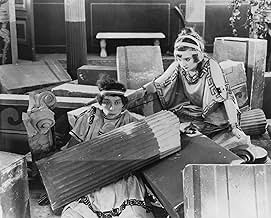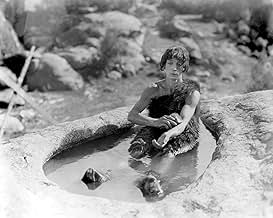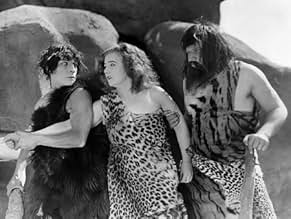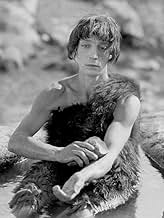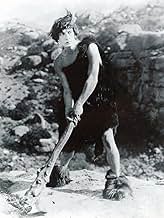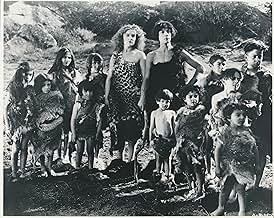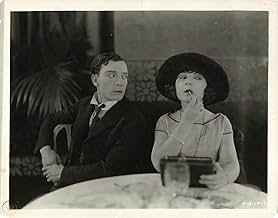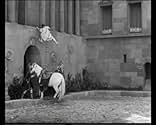AVALIAÇÃO DA IMDb
7,0/10
5,4 mil
SUA AVALIAÇÃO
Adicionar um enredo no seu idiomaThe misadventures of Buster in three separate historical periods.The misadventures of Buster in three separate historical periods.The misadventures of Buster in three separate historical periods.
- Prêmios
- 1 indicação no total
Kewpie Morgan
- The Emperor
- (as Horace Morgan)
- …
Lionel Belmore
- Undetermined Role
- (não confirmado)
- (não creditado)
Bernard Berger
- Roman-age child
- (não creditado)
Basil Bookasta
- Stone-age Child
- (não creditado)
George Bookasta
- Stone-age Child
- (não creditado)
George Davis
- Roman Guard Knocked Down
- (não creditado)
Louise Emmons
- Old Fortune Teller
- (não creditado)
F.F. Guenste
- Butler
- (não creditado)
Blanche Payson
- The Amazon
- (não creditado)
Enredo
Você sabia?
- CuriosidadesThe most famous stunt in the movie was actually built around what went wrong with the original stunt. Buster Keaton intended to leap from a board projecting from one building onto the roof of another building, but he fell short, smashing into the brick wall and falling into a net off-screen. He was injured badly enough to be laid up for three days. However, when he saw the film (the camera operators were instructed to always keep filming, no matter what happened), he not only kept the mishap, he built on it, adding the fall through three awnings, the loose downspout that propels him into the firehouse and the slide down the fire pole.
- Erros de gravaçãoIn the medium shot of the Stone Age soothsayer scene, Buster's hands are resting together near the side of the turtle. But in the cut to a close-up, we see only a hand double's right hand, and it's directly in front of the turtle's mouth. (It's clearly a hand double, since Keaton was missing his right index finger tip.)
- Versões alternativasIn 1995, Film Preservation Associates copyrighted a version with an orchestral score; no details were specified on the print.
- ConexõesEdited into The Golden Age of Buster Keaton (1979)
Avaliação em destaque
Buster presents love stories from three periods in history - the Stone Age, the Roman Age, and the Modern Age. In each, he vies for the affection of a young woman with another man, thus illustrating that emotions like love and jealousy have been constant for time immemorial, a contrast to what D. W. Griffith was trying to highlight in Intolerance, which Buster was parodying.
While the three stories are interleaved together, it's notable that at a 63 minute runtime, this is essentially three two-reel shorts put together. As Keaton put it, "Cut the film apart and then splice up the three periods, each one separately, and you will have three complete two-reel films."
The Stone Age story has lots of gags that The Flintstones would later borrow, such as prehistoric golfing, taking dictation by chiseling into a stone, and presenting a business card comprised of a small slab of rock with a crude likeness drawn on it. Buster standing atop a dinosaur, despite the bad science and primitive stop-motion effects, made me smile. The best moment, however, was when he tries to arouse jealousy in his beloved by attempting to grab another woman by the hair and take charge of her, only to find she's at least a foot taller than him. She knocks him off the rock and we get that marvelous shot of him look up into the camera on the way down to a pond below, kissing his fingers before spreading his arms wide.
The Roman Age story has a lot of the same types of visual gags, like a wristwatch made with a sundial, Buster playing an impromptu game of craps with dice with Roman numerals on the sides, and him pulling his chariot up to a "No parking" sign in Latin (naturally, mistranslating Non Postum Exit). The best gag was when he engages in a chariot race in the hippodrome using one pulled by dogs. When one starts slowing down, he replaces it like a spare tire with another that's stashed in his trunk, which was hilarious.
The Modern Age of "speed, need, and greed" features some amusing moments on the gridiron, like Buster being propped up by an opponent so he can be knocked down each play, and handing the ball off when he's about to be creamed on a punt return. There's also a clever getaway shot from above where he goes through one taxi to another faced in the opposite direction, and when the two cabs drive off, his pursuers think he's in the first. Nothing tops that extraordinary leap from one building to another, however, where Buster missed the jump in real life. While there was a safety net 35 feet below him, he hit it hard and awkwardly enough that he injured his knees, hips, and elbows, and had to stay in bed for several days afterwards. How he then improvised the awnings and slid into the fire department was brilliant, and "the biggest laughing sequence in the picture...because I missed it in the original trick," as he put it.
Overall the film wasn't helped by being so drawn out as the pace of the jokes probably could have been faster, but there's a lot to like here. Pretty cute ending too.
While the three stories are interleaved together, it's notable that at a 63 minute runtime, this is essentially three two-reel shorts put together. As Keaton put it, "Cut the film apart and then splice up the three periods, each one separately, and you will have three complete two-reel films."
The Stone Age story has lots of gags that The Flintstones would later borrow, such as prehistoric golfing, taking dictation by chiseling into a stone, and presenting a business card comprised of a small slab of rock with a crude likeness drawn on it. Buster standing atop a dinosaur, despite the bad science and primitive stop-motion effects, made me smile. The best moment, however, was when he tries to arouse jealousy in his beloved by attempting to grab another woman by the hair and take charge of her, only to find she's at least a foot taller than him. She knocks him off the rock and we get that marvelous shot of him look up into the camera on the way down to a pond below, kissing his fingers before spreading his arms wide.
The Roman Age story has a lot of the same types of visual gags, like a wristwatch made with a sundial, Buster playing an impromptu game of craps with dice with Roman numerals on the sides, and him pulling his chariot up to a "No parking" sign in Latin (naturally, mistranslating Non Postum Exit). The best gag was when he engages in a chariot race in the hippodrome using one pulled by dogs. When one starts slowing down, he replaces it like a spare tire with another that's stashed in his trunk, which was hilarious.
The Modern Age of "speed, need, and greed" features some amusing moments on the gridiron, like Buster being propped up by an opponent so he can be knocked down each play, and handing the ball off when he's about to be creamed on a punt return. There's also a clever getaway shot from above where he goes through one taxi to another faced in the opposite direction, and when the two cabs drive off, his pursuers think he's in the first. Nothing tops that extraordinary leap from one building to another, however, where Buster missed the jump in real life. While there was a safety net 35 feet below him, he hit it hard and awkwardly enough that he injured his knees, hips, and elbows, and had to stay in bed for several days afterwards. How he then improvised the awnings and slid into the fire department was brilliant, and "the biggest laughing sequence in the picture...because I missed it in the original trick," as he put it.
Overall the film wasn't helped by being so drawn out as the pace of the jokes probably could have been faster, but there's a lot to like here. Pretty cute ending too.
- gbill-74877
- 4 de mai. de 2023
- Link permanente
Principais escolhas
Faça login para avaliar e ver a lista de recomendações personalizadas
- How long is Three Ages?Fornecido pela Alexa
Detalhes
- Data de lançamento
- País de origem
- Idioma
- Também conhecido como
- A Idade da Pedra
- Locações de filme
- Empresa de produção
- Consulte mais créditos da empresa na IMDbPro
Bilheteria
- Faturamento bruto mundial
- US$ 177
- Tempo de duração1 hora 3 minutos
- Cor
- Mixagem de som
- Proporção
- 1.33 : 1
Contribua para esta página
Sugerir uma alteração ou adicionar conteúdo ausente

Principal brecha
By what name was À Antiga e à Moderna (1923) officially released in India in English?
Responda
